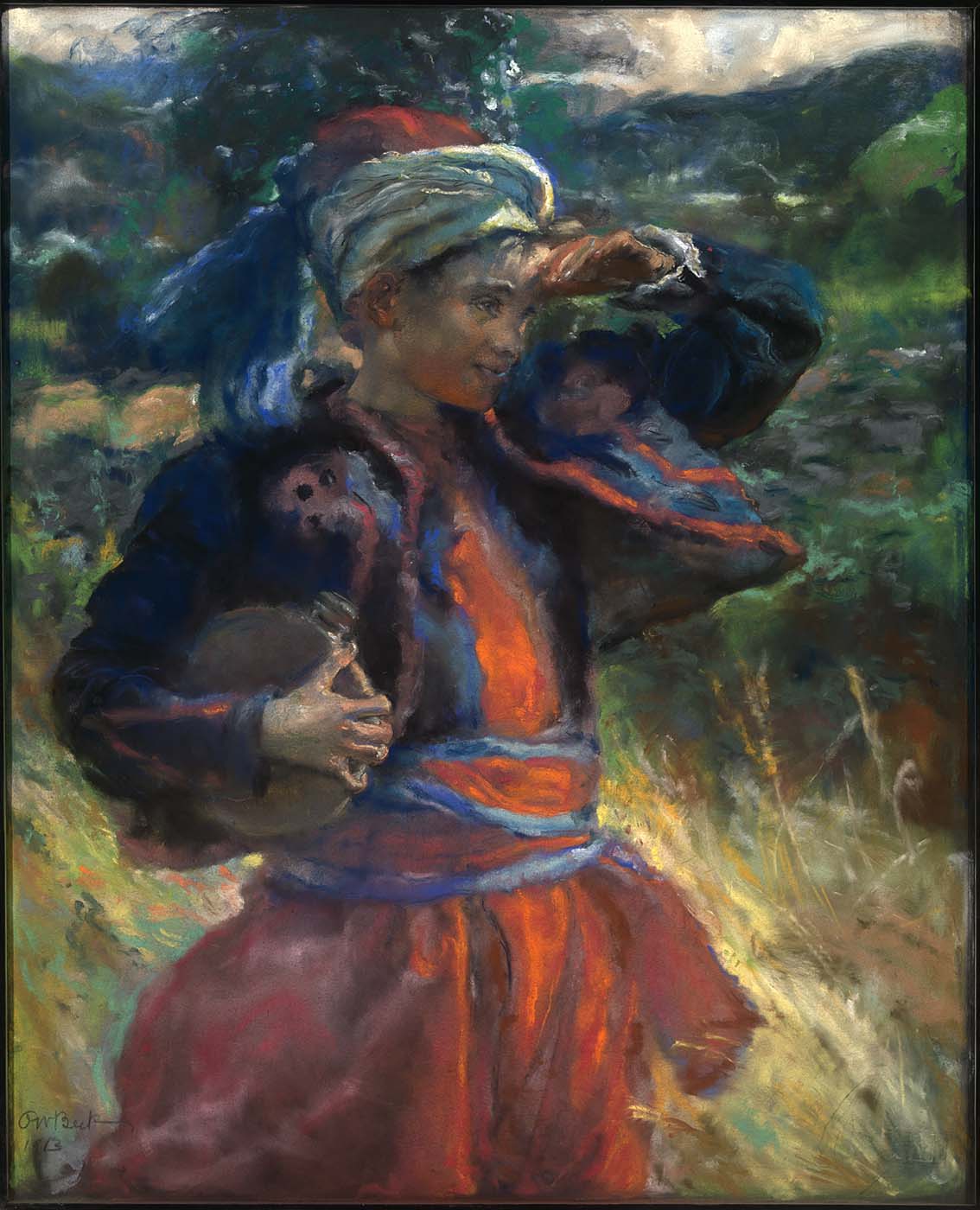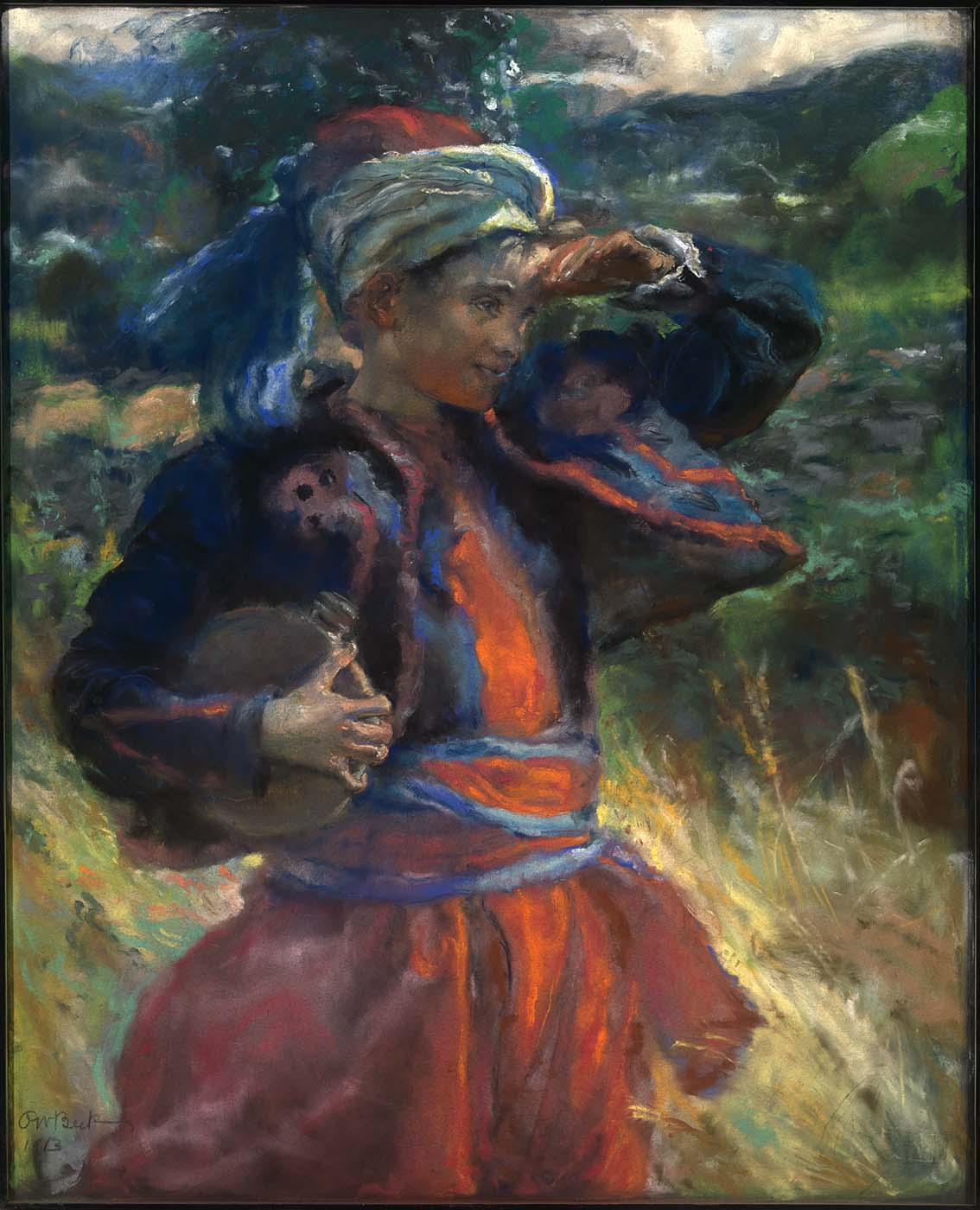Before developing the starch-film tempera method (which would become his legacy as a painter), Otto Walter Beck was an accomplished portraitist. He was commissioned to create 80 different paintings of Civil War veterans after he moved to New York City, capturing the aging valor of a conflict that divided a nation.
The Smithsonian Museum of American Art later exhibited and purchased these paintings, maintaining a proud and patriotic collection of this otherwise lesser-known painters earliest endeavors. Though he experimented more in his later years, these pieces reveal the sensitivity and devotion to dynamism of a brilliantly talented artist.
In The Drummer Boy, the sun strikes the subject’s head almost abruptly, causing him to shield his eyes. Its intensity is reflected in the grass around him, the amber forms blurring in the breeze. As the stalks blow past him, the boy’s outfit moves in contrast, wrapping around him and flaring up under his raised arm.
Even when standing still, Beck’s subject seems to move, either with the wind or the Earth beneath it. This “flow” is an effect he spent a good portion of his life trying to master - until he developed the aforementioned technique. Using starch as a base for tempera paint, Beck managed to create a viscosity that accorded him the fluid, gliding motion he had sought in his earlier works.
Walter Beck, and his friend W.B. Yeats used to spent time in Innisfree, a picturesque island in the middle of a lake. You can read about this beautiful place and it's influence on both artist in the article "A Search for Solace at Innisfree Gardens".
- Anthony deFeo


 Walter Beck
Walter Beck